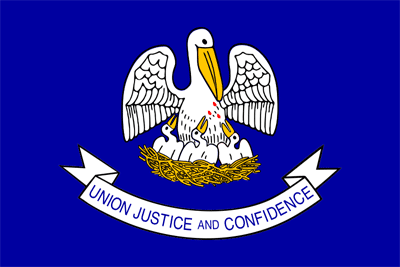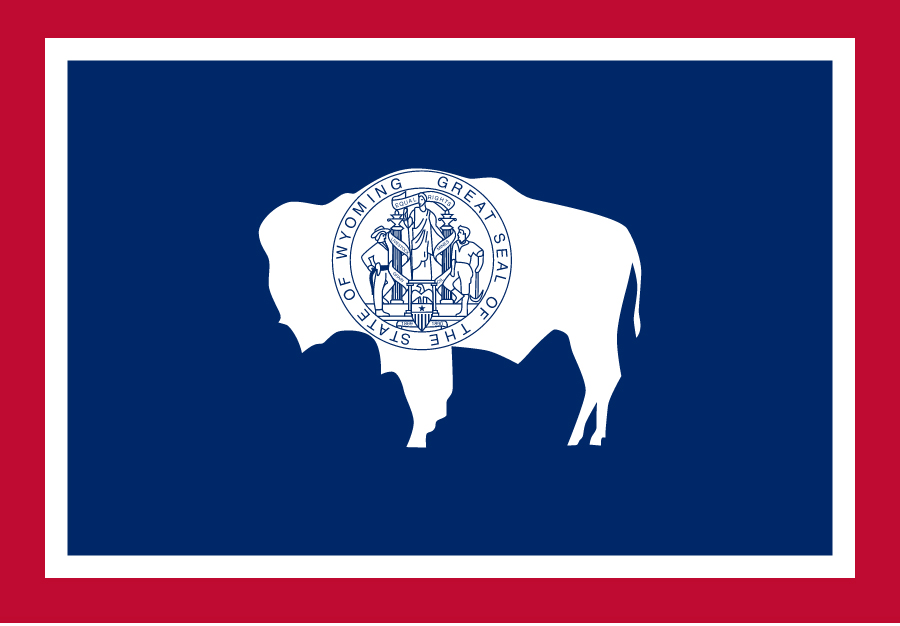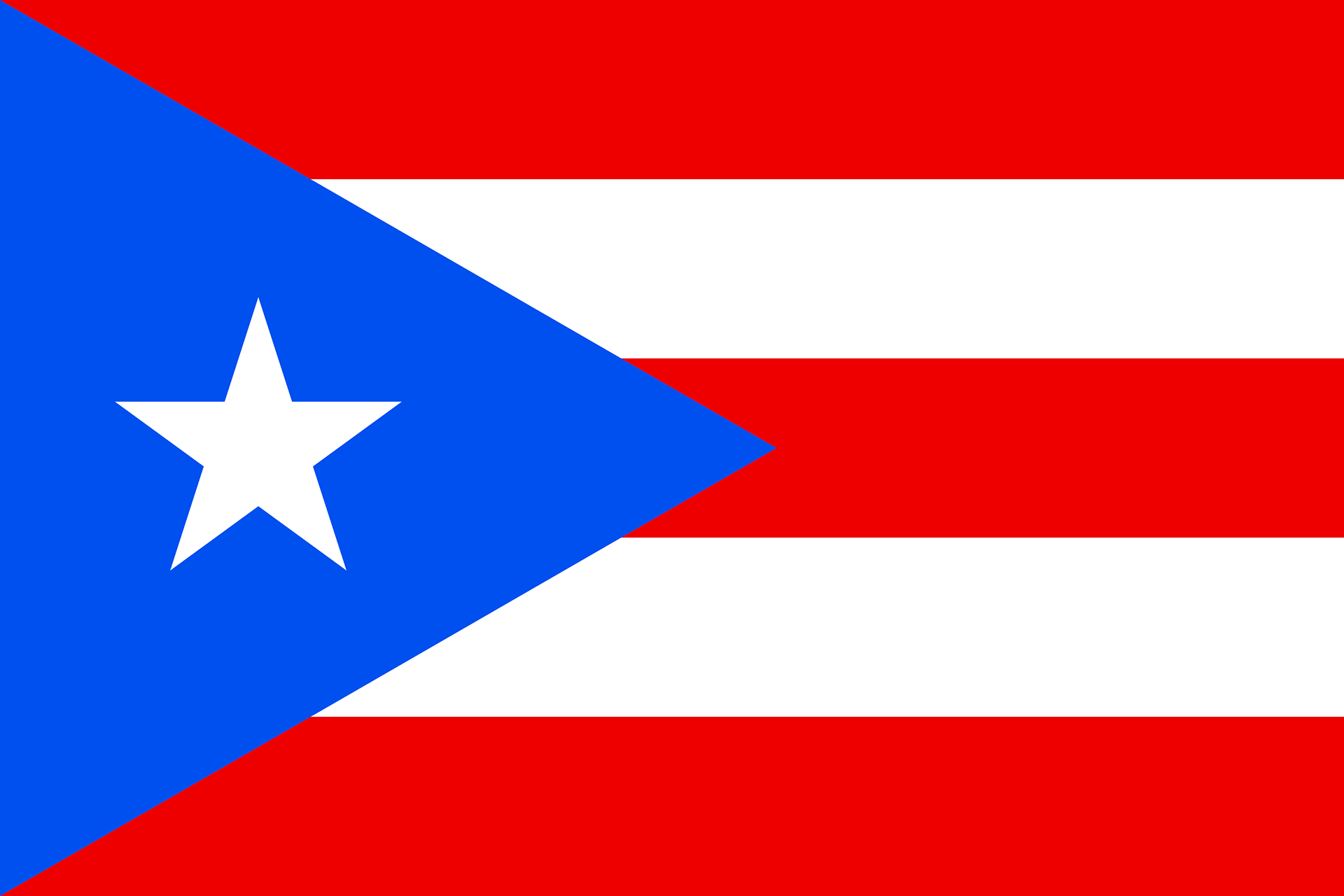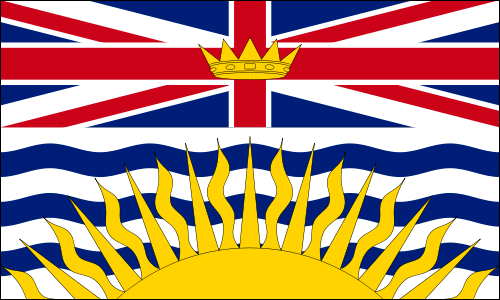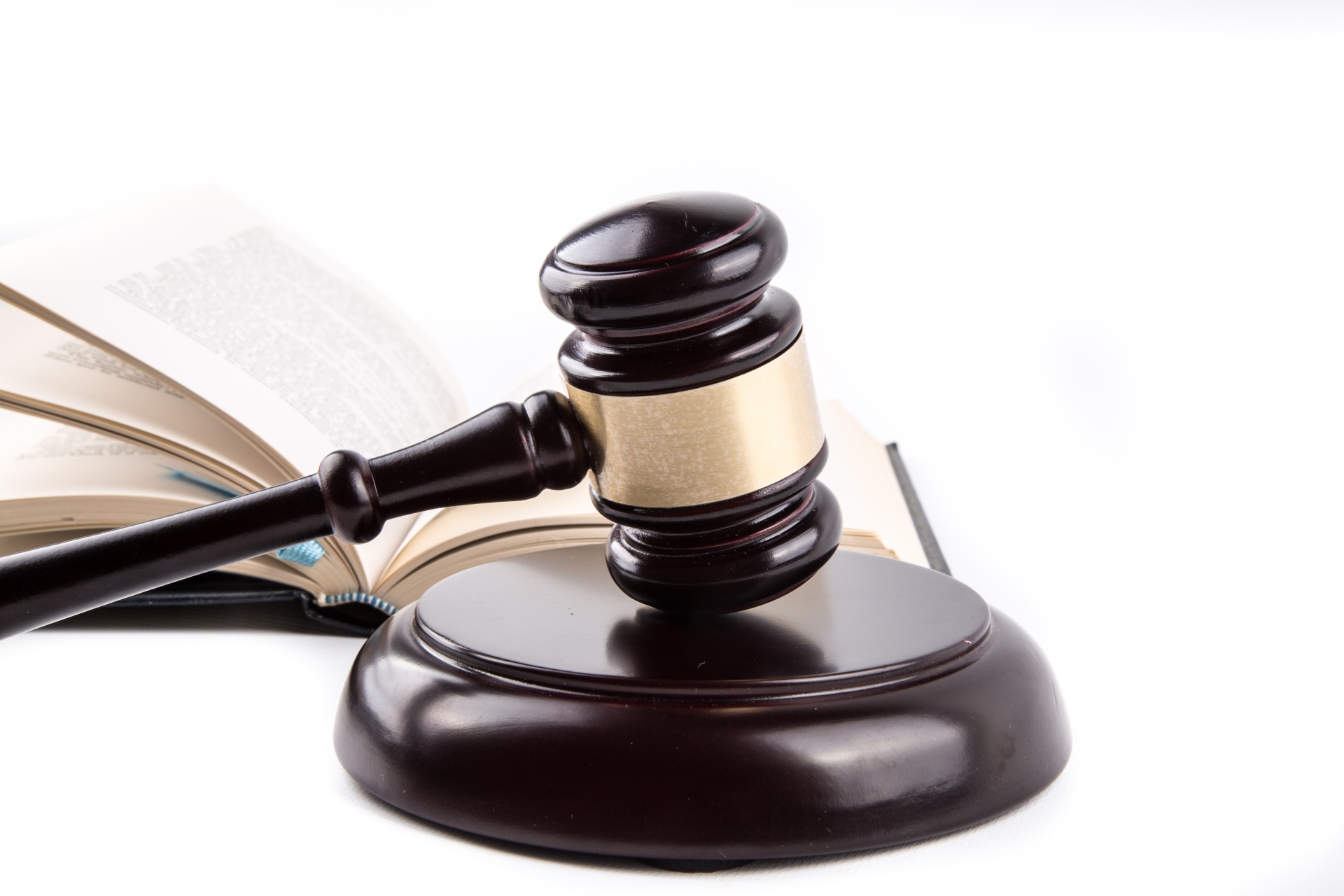
Different states have different laws and recommendations regarding the use of baby car seats in your car.
While, it is advisable that you follow the law so that you do not get into trouble with your state’s authorities, the recommendations provided by the regulations are not by any means best practice when it comes to child seat safety.
In addition to the legal requirements, I recommend that your child should always ride rear facing until they are two, forward facing with a harness until age 6 and a booster seat until they cross the weight limit.
Given that the legal regulations take a lot of time to be drawn out and implemented, I always advise that you follow the recommendations of the National Highway Transport Safety Administration and the American Academy of Pediatrics that are most updated.
You can also follow our ultimate guide here in Wumblers on best practice on the installation and use of a car seat to ensure that your child is riding safely and according to your state’s laws.
Most states require that you use the car sear seat according to the guidelines given by the manufacturer in what is typically referred to as the :proper use” clause.
All the territories and states require that children fitting certain criteria including weight, height, and age ride in certain car seats.
Most follow the typical stages of older children in the boosters, toddlers in the forward facing seats, and infants in infant seats or convertibles.
Most laws require that your child rides in the rear seat if possible, and most will also allow children of a certain weight, height or age to use seat belts.
State Law Exceptions
- 5 states (New York, New Jersey, Louisiana, Florida and California) have seat belt requirements that school buses are required to adhere to. All buses purchased after 2010 have to adhere to the same requirements in Texas.
- 4 states (Oklahoma, Pennsylvania, New Jersey, and California) require that if your child is less than two years old, they have to ride in a rear facing car child seat.
- 48 states Puerto Rico and the District of Columbia require that you use booster seats or harnesses if your child has outgrown baby seat but are still too small to safely ride in a car using an adult seat belt.
- South Dakota and Florida lack booster seat laws.
Non compliance with your state’s child passenger safety law can result in fines ranging from $10 to $500. Some states could also dock points on your license if you run afoul of the regulations.
State Child Seat Safety Laws
ALABAMA
Children ages 6 until 15 are required to wear a seat belt in all seats.
Booster seats or child safety seats are required until age 6.
Children must be in the best front facing seats or convertible seats until age 5 or 40 lbs. Infant seats and convertible seats are required to be rear-facing until passenger is at least 1 year old or 20 lbs. in weight.
All child restraint laws are standard enforcement.
ALASKA
Children between age 8 and 16 who are less than 57 inches in height and under 65 lbs. shall be restrained in a child safety device or seat belt as determined by the driver.
Children over 4, taller than 57 inches, and weighing more than 65 lbs. shall be restrained in a seat belt.
Children between 4 and 8 years old, less than 57 inches in height, and weighing 20 to 65 lbs. must be secured in a booster seat or child safety seat.
Children between 1 and 5 years old and weighing 20 lbs. or more must be secured in a child restraint device.
Children less than one year of age or weighing less than 20 lbs. must be secured in a rear-facing child safety seat.
Violation of the child passenger safety law is a standard offense.
ARIZONA
Children under 16 are required to be properly restrained in all seats.
Children who are age 5 to 8 and 57 inches or less in height must use a booster seat.
Child restraints are required for children under age 5.
Violation of the child restraint law is a primary offense.
ARKANSAS
Children ages 6 until 15 or at least 60 lbs. are required to be restrained in a seat belt.
Child restraints are required for children under age 6 and under 60 lbs.
All occupants must wear a seat belt when the vehicle is being operated by a driver with an intermediate license.
Violation of the child restraint law is a standard offense.
CALIFORNIA
Children under age 8 and under 57” must be properly secured in a child restraint system. All other children age 8 to 16 or over 57″ must be secured in a properly fitted seat belt. Effective January 1, 2017, children under age 2, and under 40 lbs. or under 40”, must be properly secured in a rear-facing car seat.
Children under age 8 must be restrained in a child passenger restraint system in the rear seat.
California law specifically requires children to be properly restrained, meaning the lap belt is low on the hips, touching the upper thighs, and the shoulder belt is crossing the center of the chest.
Children in rear-facing car seats may not ride in front if there is an active passenger air bag.
Violation of the child passenger safety law is a standard offense.
COLORADO
Children ages 8 until 16 must wear seat belts.
Children under age 8 must use a forward facing car seat or booster seat
Children under age 4 and less than 40 lbs., shall be properly restrained in a child restraint system.
Children under age 1 and under 20 lbs. shall use a rear-facing child restraint system.
Violation of the booster seat and the child restraint law are standard offenses.
CONNECTICUT
Children over 7 years of age who weigh more than 60 lbs. must be in a seat belt.
Children under age 7 and less than 60 lbs. are required to use a child restraint. Children who ride in a booster seat must use a lap and shoulder belt.
Children under age 1 and under 20 lbs. are required to be in a rear-facing child restraint.
Children riding in a vehicle without lap and shoulder belts are exempt from complying with the booster seat requirement.
Violation of the child restraint law is a standard offense.
DELAWARE
No child who is 65 inches or under in height or who is under age 12 shall occupy the front passenger seat of any vehicle equipped with a passenger-side airbag that has not been deliberately rendered inoperable.
Children under age 8 and under 66 lbs. must be properly restrained in a child safety seat or booster seat that meets federal motor vehicle safety standards appropriate for the child’s weight and height.
Violations of the child restraint laws are standard offenses.
The maximum fine for the first offense for a violation of the child restraint law is $25.
DISTRICT OF COLUMBIA
Children ages 8 until 16 are required to be restrained in a child restraint or seat belt.
Children under age 8 are required to be restrained in a child restraint.
Violation of the child restraint law is a standard offense.
FLORIDA
Children ages 6 until 18 must be restrained in a child restraint or seat belt.
Children under age 6 are required to use a child restraint.
Violation of the child restraint law is a standard offense that could result in a fine of $60 and 3 points docked off your license.
The Florida car seat laws require you to use a rear facing car seat from birth until the child attains the weight or height limits set forth by the manufacturer (in most instances 35 pounds) or until the child is at least two years old.
You should have your child in a forward facing car seat that comes with a harness until they attain the weight and height limit recommended by the Manufacturer (usually between 40 and 65 pounds).
Use a belt positioning booster seat for the child between 8 and 12 years of age or until the child is at least 4 feet 9.
Children aged 13 and above can safely sit in the car’s front seat though its recommended they seat in th
GEORGIA
Children ages 8 until 18 and over 4 feet 9 inches are required to be in a seat belt in all seats.
e back until they outgrow the lap and shoulder belts of the booster seat. If they are still small and thin, have them sit in the back for as long as possible.
Children under age 8 and under 4 feet 9 inches are required to be in a child restraint installed and being used in accordance with the manufacturer’s directions, if available, in the rear seat.
Violation of the child restraint law is a standard offense.
HAWAII
Children ages 8 until 17 are required to wear a seat belt in all seats. Children ages 4 until 8 must ride in a child safety seat or booster seat unless they are over 4 feet 9 inches or weigh more than 40 lbs.
Children under age 4 must be restrained in a child passenger restraint system.
Children over 40 lbs. may be belted without a booster seat if they are seated in the rear seat of a vehicle equipped with only a lap belt.
Violations of the child restraint laws are standard offenses.
IDAHO
Children under age 7 are required to be in a child safety restraint.
Violation of the child restraint law is a standard offense.
ILLINOIS
Children under age 8 are required to be properly secured in a child restraint system.
Children over 40 lbs. may be transported in the back seat of a vehicle with only a lap belt if the back seat is not equipped with a lap and shoulder belt.
Violations of the child restraint law is a standard offense.
INDIANA
Children ages 8 until 16 are required to be in either a seat belt or a child restraint.
Indiana law states that children under age 8 must be properly restrained in a child safety seat or a booster seat.
Children over 40 lbs. may be transported in the back seat of a vehicle with only a lap belt if the back seat is not equipped with a lap and shoulder belt.
Violations of the child restraint laws are standard offenses.
Vehicles participating in a funeral procession are exempt from complying with child restraint laws.
IOWA
Children ages 6 until 18 must be restrained in either a seat belt or child restraint system.
Children under age 6 must be restrained in a child restraint.
Infants under age 1 and under 20 lbs. must be restrained in a rear-facing safety seat.
Violation of the child restraint law is a standard offense.
KANSAS
Children ages 8 until 18, over 80 lbs., or over 4 feet 9 inches must properly wear a seat belt.
Children under age 4 until 8 who weigh less than 80 lbs. or are less than 4 feet 9 inches are required to be properly restrained in a child passenger safety restraint system or booster seat.
Children under age 4 are required to be in a child restraint system.
Violation of the child restraints laws are standard offenses.
KENTUCKY
Children under 7 years old and between 40 and 50 inches in height (effective June 22, 2015, under 8 years old and between 40 and 57 inches) must be secured using a booster seat
Children 40 inches or less must be properly secured in a child restraint system.
Violation of the child restraint law is a standard offense.
LOUISIANA
Children ages 6 until 13 or more than 60 lbs. must be restrained in either a booster seat or a seat belt regardless of seating position. When the passenger side front airbag is active, children younger than age 6 or less than 60 lbs. must be in the rear seat, if available.
Children 4 and 5 years of age or 40-60 lbs. must be restrained in a booster seat.
Children ages 1 until 4 or 20-40 lbs. must be restrained in a forward-facing child safety seat. Children under age 1 year or less than 20 lbs. must be restrained in a rear-facing child safety seat.
Children who because of age and weight can be placed in more than one category shall be placed in the more protective restraint.
Violations of the child restraint laws are standard offenses.
MAINE
Children ages 8 until 18 and more than 4 feet 9 inches tall must be properly secured in a seat belt.
Children under age 12 and under 100 lbs. must be in the rear seat of a vehicle, if possible.
Children who weigh 40-80 lbs. and are under age 8 must be properly secured in a booster seat or child safety seat.
Children under 40 lbs. must be properly secured in a child safety seat that meets federal standards and properly secured in accordance with the manufacturer’s instruction.
Violation of the child restraint law is a standard offense.
MARYLAND
Children under age 16 must be restrained in a seat belt or a child safety seat.
All children under age 8 must be secured in a child safety seat unless the child is 4 feet 9 inches or taller.
Violation of the child restraint law is a standard offense.
MASSACHUSETTS
Children age 8 through age 12 shall use an appropriate child restraint or wear a safety belt that is properly adjusted and fastened.
Children under age 8 and less than 4 feet 9 inches tall shall be properly fastened and secured by a child restraint system.
Violation of the child restraint law is a standard offense.
MICHIGAN
Children under age 16 must wear a seat belt or be in an approved restraint system regardless of where they sit in the vehicle.
Children under age 8 and less than 4 feet 9 inches shall be properly secured in a booster seat or child restraint system.
Children under age 4 must be properly secured in a child restraint system in the rear seat, if possible.
Violation of the child restraint law is a standard offense.
MINNESOTA
Booster seat laws in Minnesota state that children under age 8 and under 4 feet 9 inches are required to be in a booster seat.
Violations of the child restraint laws are standard offenses.
MISSISSIPPI
Children age 4 through 6 who are less than 4 feet 9 inches tall and weigh less than 65 pounds are required to be secured in a booster seat.
Children under age 4 shall be properly restrained in a child passenger restraint device.
Violation of the child restraint law is a standard offense.
MISSOURI
Children ages 8 until 16 who weigh at least 80 lbs. or are taller than 4 feet 9 inches must use a seat belt or appropriate booster seat.
Children ages 4 until 8 must ride in a booster seat or appropriate child restraint system, unless they are taller than 4 feet 9 inches or weigh more than 80 lbs.
Children less than age 4 or less than 40 lbs. must be secured in a child passenger restraint system.
Violation of the child restraint law is a standard offense.
MONTANA
Children under age 6 and weighing less than 60 lbs. must be properly restrained in a child restraint device, appropriate for the height and weight of the child as indicated by manufacturer standards.
Violation of the child restraint law is a standard offense, though a violation of the booster seat law is a secondary offense.
NEBRASKA
Children ages 6 until 18 are required to ride secured in an occupant protection system in all seating positions.
Children under age 6 are required to be in a child restraint system.
Violation of the child restraint law is a primary offense.
NEVADA
Children under age 6 and who weigh less than 60 lbs. must be secured in a child passenger restraint system.
Violation of the child restraint law is a standard offense.
NEW HAMPSHIRE
Seat belts are required for all passengers under age 18.
Children under age 7 and under 57 inches must be properly fastened and secured by a child passenger restraint system.
Violation of the child restraint law is a standard offense.
NEW JERSEY
Children under age 8 and weighing less than 80 lbs. must be in a child passenger restraint system or booster seat in the rear seat, if possible.
Effective September 1, children under 2 and weighing less than 30 pounds must be in a rear-facing child passenger restraint system. Children under 4 and weighing less than 40 pounds must be in either a rear- or rear-seat forward-facing child passenger restraint system. Children under 8 and under 57 inches must be in a forward facing child passenger restraint system or rear-seat booster seat.
Violation of the child restraint law is a standard offense.
NEW MEXICO
Children under 18 must be properly restrained in a child restraint device or a seat belt.
Children ages 5 and 6 or less than 60 lbs. must be restrained in a booster seat or appropriate child safety seat.
Children ages 1 through 4 or weighing less than 40 lbs. must be properly secured in a child passenger restraint device.
Children under 1 year old must be placed in a rear-facing child safety seat in the rear seat, if it is available.
Violations of the child restraint law are standard offenses.
NEW YORK
All children ages 8 to 16 must wear a seat belt in all seats.
All children ages 4 until 8, or under 4 and over 40 lbs., must be restrained in a booster seat.
Children under age 4 and under 40 lbs. must be restrained in a child restraint system.
Violation of the child restraint law is a standard offense.
NORTH CAROLINA
Children ages 8 until 16 must be secured in either a child passenger restraint system or a seat belt.
Children under age 8 and less than 80 lbs. must be secured in a child passenger restraint system. If the vehicle has a passenger-side air bag and a rear seat, the child must be secured in a rear seat unless the restraint system is designed for use with air bags.
Violation of the child restraint law is a standard offense, but secondary for rear seat occupants age 16 and older.
NORTH DAKOTA
Children ages 7 until 18 must be in an approved child restraint system or in a seat belt.
Children under age 7 and less than 4 feet 9 inches and 80 lbs. must be properly secured in a child restraint system.
Violation of the child restraint law is a standard offense.
OHIO
According to Ohio Car seat laws, any of your children under 40 pounds or below the age of 4 needs to ride in a child safety seat that adheres to federal child safety standards.
The federal guidelines are usually according to the size and age of your baby. For instance, Ohio car seat regulations assert that a child needs to be in the rear facing car seat from their first year and stay there for as long as possible, preferably up to the age of 3.
Children ages 8 until 15 are required to be in either a seat belt or a booster seat.
Booster seat requirements in Ohio state that children age 4 -8 and under 4 feet 9 inches must be seated in a booster seat.
Children under age 4 and weighing less than 40 lbs. must be secured in a child restraint system when being transported in a motor vehicle.
Violation of the child restraint law is a standard offense for children under age 4 and may result in a fine ranging from between $25 to $75.
OKLAHOMA
Children at least age 8 or over 4 feet 9 inches in height must be properly restrained in a seat belt regardless of seating position.
Children age 4 to 8 and under 4 feet 9 inches in height must be properly restrained in a child passenger restraint system or booster seat.
Children under age 4 must be properly restrained in a child passenger restraint system. The restraint system shall be rear-facing until age 2 or the child reaches the height or weight limit of the system.
Children weighing more than 40 lbs. may be transported in the back seat of the motor vehicle while wearing only a lap belt, if the back seat of the motor vehicle is not equipped with a combination lap and shoulder belt.
Violation of the child restraint law is a standard offense.
OREGON
Children under 8 weighing more than 40 lbs. and who are 4 feet 9 inches or shorter, must ride in a child safety system which elevates them (i.e. booster seat) so the lap and shoulder belt fit them properly.
Child passengers who weigh 40 lbs. or less must be properly secured in a child safety system.
Child passengers under 1 year of age, regardless of weight, or children who weigh 20 lbs. or less, must be properly secured in a child safety system in a rear-facing position.
Violation of the child restraint law is a standard offense.
PENNSYLVANIA
Children ages 8 until 18 must be restrained in all seating positions in a properly adjusted and fastened safety seat belt system.
Children ages 4 until 8 must be securely fastened in a booster seat.
Children under age 4 must be securely fastened in a child passenger restraint system.
Violation of the child restraint law is a standard offense.
RHODE ISLAND
Children age 8 until 18, or less than 8 and who are more than 57 inches or weighing more than 80 lbs. are required to be in a seat belt.
All children under age 8 shall be properly restrained in the rear seat of the vehicle.
Children under age 8, less than 57 inches, and less than 80 lbs. must be transported in the rear seat and properly restrained in a child restraint system.
A violation of the child restraint law is a standard offense.
SOUTH CAROLINA
Children ages 1 until 6 and weighing more than 80 lbs. must be restrained in a seat belt. A child under 6 years who can sit with his or her knees bent over the vehicle seat edge when sitting up straight with his or her back firmly against the seat may wear a seat belt.
Children ages 1 until 6 and weighing 40 to 80 lbs. must be properly restrained in a booster seat.
Children ages 1 until 6 and weighing 20 to 40 lbs. must be properly restrained in a child seat.
Children under age 6 must ride in the rear seat of the vehicle. This does not apply if all rear seats are taken by children under 6.
Children under age 1 or under 20 lbs. must be properly restrained in a rear-facing child seat.
Violation of the child restraint law is a standard offense.
SOUTH DAKOTA
Children under age 18 must wear a seat belt.
Children under age 5 and weighing less than 40 lbs. must be properly restrained in a child restraint system.
Violation of the child restraint law is a standard offense.
TENNESSEE
Children ages 9 until 16 must be properly restrained in a seat belt.
Children under age 9 are required to be seated in the rear seat of the vehicle, if available and children ages 9 until 13 are encouraged to be seated in the rear seat of the vehicle, if available.
Children ages 4 until 9 and less than 4 feet 9 inches must be properly restrained in a booster seat.
Children ages 1 until 4 weighing more than 20 lbs. must be properly restrained in a child seat.
Children less than 1 year, or children under 20 lbs., must be properly restrained in a rear-facing child seat.
Violation of the child restraint laws is a standard offense.
TEXAS
Children ages 8 until 17 or at least 57 inches must be secured by a safety belt provided that the child is occupying a seat equipped with a safety belt.
Children under age 8 and less than 57 inches must be secured in a child passenger safety seat system in accordance with the manufacturer’s instructions.
Violation of the child restraint law is a standard offense.
UTAH
Children under age 8 are required to use a child restraint system unless the child is at least 4 feet 9 inches tall.
Violation of the child restraint law is a standard offense.
VERMONT
Children ages 8 until 18 must be restrained in a child safety seat or seat belt.
Children age 1 year or older or until age 8 and more than 20 lbs. must be properly restrained in a federally approved child passenger restraint system.
Children age 1 and under and less than 20 lbs. must be restrained in a rear-facing infant seat.
Violation of the child restraint law is a standard offense.
VIRGINIA
Children ages 8 until 18 must be secured in a child restraint, booster seat, or safety belt regardless of seating position.
Children under age 8 must be secured in a child restraint or booster seat, as appropriate.
Children under 1 year must be restrained in a rear-facing infant seat.
Violation of the child restraint law is a standard offense.
WASHINGTON
Washington’s Child Passenger Restraint Law requires that
You keep toddlers and infants in rear facing car seats until the height and weight limit recommended by the manufacturer or until they are at least two years old.
All children aged two or older or even if younger and have outgrown the limits of the rear facing car seat need to shift to a forward facing car seat combined with harness for an extended period or until the maximum height and weight recommended by the car seat manufacturer.
When your child has outgrown the forward facing car seat, you need to use a belt positioning booster until the recommended age to use lap belts which is when they are between 8 to 12 years of age or when they are at least 4 foot 9 inches tall.
Seat belts or appropriate child safety seats are required for children under age 16.
Children under age 13 must be in the rear seat where it is practical to do so.
Violation of the child restraint law is a standard offense.
WEST VIRGINIA
Children ages 8 until 18 must be in a seat belt in all seats.
Children under age 8 must be restrained in a child passenger safety device.
Children under age 8 and at least 4 feet 9 inches may be in a safety belt in all seats.
Violation of the child restraint law is a standard offense.
WISCONSIN
Children must ride in a rear-facing car seat until the age of 1 and at least 20 lbs.
Then they must ride in a forward-facing child seat until age 4 or they weigh more than 40 lbs. Children under age 4 must be properly secured in a child restraint system in the rear seat, if possible. They must then ride in a booster seat until they turn 8, weigh more than 80 lbs., or are taller than 4 feet 9 inches. Violation of the child restraint law is a standard offense.
WYOMING
Children under age 9 must be secured in a child safety restraint system. The child must be restrained in the rear seat unless the vehicle has only 1 row of seats, then the child may be secured in a child safety restraint system in the front seat.
Violation of the child restraint law is a standard offense.
PUERTO RICO
Children under the age of 4 years traveling on public highways must be in protective car seat (exempts handicapped or incapacitated children). Children age 4 until 9 or under 57 inches must be in a booster seat. Children age 9 and older or over 57 inches must be using seat belt properly. The driver is responsible for compliance with provision and subject to penalty for failure to comply.
Children under age 12 must be in the rear seat of a vehicle, if possible.
CANADA STATE LAWS
The following is a list of booster, infant and car seat laws for the 3 territories and 10 provinces of Canada. You need to note that most of the laws will usually call for a child older than 4 to ride in a booster seat while restrained by either five point harnesses or the car’s vehicle safety belt system. Nonetheless the requirements and ages will be different depending on your territory/province. You also need to remember that the requirements are not necessarily best practice. However, I always recommend that you adhere to the minimum requirements stipulated by your territory/province when traveling with your child. Canada Car booster booster seat law/requirements generally recommends that children should use booster seats until they are at least 57 inches (4 feet 9 inches) tall and weigh between 80 and 100 pounds, and pass the 5-step test. Most children will usually satisfy the test between the ages of 8 and 12. For more information regarding the requirements and laws on seat belt use in Canadian territories and Provinces check out Child Passenger Association of Canada.
ALBERTA
It is not permissible to operate a vehicle with a child passenger unless: (1) the motor vehicle is equipped with a child seating assembly; (2) the child seating assembly is properly installed; and (3) the child is occupying and properly secured in the child seating assembly.
It is not permissible to operate a motor vehicle on the highway with a passenger at least 6 years of age but under 16 years, or a child weighing more than 18 kg., occupying a seating position with a seat belt assembly unless the passenger is wearing the complete seat belt assembly.
A child from birth up to 9 kg. can be in either a rear-facing infant seat or a rear-facing convertible seat, used and installed according to the manufacturer’s instructions.
A child weighing 9 to 18 kg. must be in a child safety seat and be properly secured by using the vehicle seat belt and the child safety seat tether strap.
When a child is over 18 kg., an approved booster seat for the vehicle or the vehicle seat belt may be used.
BRITISH COLUMBIA
All infants must be properly secured in an approved rear-facing infant seat away from an active frontal airbag until they reach a weight of 9 kg and 1 year old.
All children weighting 9-18 kg must be secured in an approved child seat.
All children must be restrained in an age and weight appropriate child seat until 9 years of age, unless they have reached the height of 145 cm tall.
MANITOBA
It is illegal to operate a motor vehicle when a passenger at least 5 but not yet 18 years of age, or a passenger under the age of 5 that weighs over 23 kg, is not wearing a passenger restraint. When the passenger restraint consists of a separate pelvic and torso restraint, the driver and passengers may wear the pelvic restraint only.
It is illegal to operate a motor vehicle with a passenger age 5 until 9 years of age or under 145 cm or under 36 kg who is not secured using a booster seat.
It is illegal to operate a motor vehicle with a passenger under 5 years of age and under 23 kg who is not fastened in a child restraint device.
NEW BRUNSWICK
A person driving a motor vehicle on a highway with a passenger 9 – 16 years and more than 36 (79-80 lbs.) kg or more than 145 cm (4′ 9″) must ensure that the passenger: (1) is wearing the complete seat belt assembly in a properly adjusted and securely fastened manner, or (2) is occupying and properly secured in a child seating and restraint system.
A person driving a motor vehicle on a highway must ensure that passengers 18 kg (40 lbs.) or less occupy and are properly secured in an appropriate child seating and restraint system. Children who weigh 18-36 kg (40-80 lbs.) but under 9 years old or under 145 cm may be in a booster seat. Children who weigh less than 9 kg (20 lbs.) are required to be secured in either an infant carrier or convertible seat adjusted to the rear-facing position while riding in vehicles where there is an available seating position fitted with a seat belt.
NEWFOUNDLAND AND LABRADOR
A child who weighs less than 9 kg must be secured in a rear-facing infant car seat.
A child who weighs 9 kg or more but less than 18 kg must be secured in a child car seat or an infant car sear as recommended by the manufacturer.
A child who is under age 8 and weighs more than 18 kg but less than 37 kg and is less than 145 cm in height must be secured in a booster seat and the vehicle’s complete seat belt assembly, or in a child car seat as recommended by the manufacturer.
These requirements do not apply if the driver holds a certified report by a qualified physician stating that the child cannot be placed in the restraint system because of medical reasons.
A child who is under age 16 must wear a properly secured and fastened seat belt regardless of seating position.
NORTHWEST TERRITORIES
All children weighing less than 18 kg are required to be in a child restraint system when in a motor vehicle. Children weighing less than 9 kg must be secured in a rearward facing child restraint system.
NOVA SCOTIA
Children under 1 year of age and under 10 kg. (22 lbs.) must be in a rear-facing child safety seat. Children under 18 kg. (40 lbs.) must be in a child restraint system. Children over 40 lbs. but less than 145 cm (4 feet 9 inches) or under 9 years old must be placed in a booster seat. Safety belts may be used at age 9 or above 145 cm.
A vehicle registered in a jurisdiction which does not require the use of a child restraint system for a toddler must secure the toddler in a lap belt, at a minimum if a lap belt is available to that child.
NUNAVUT
No person shall operate, on a highway, a motor vehicle in which there is a passenger under 15 of the prescribed size or weight unless that passenger is properly secured in a prescribed child restraint system or seat belt.
A toddler between 9kg and 18kg shall be secured in a child restraint system
An infant under 9kg shall be secured in a rearward facing child restraint system
ONTARIO
Children under the age of 8 and who weigh less than 80lb (36 kg) or more or taller than 4 foot 9 (145 cm) need to be secured in a booster car seat or in an appropriate child safety seat. For any child that has exceeded these weight and height limits, the Ontario child booster seat laws do not apply and they may use car seat belts without any restriction.
Toddler weighing in at between 9 to 18 kg need to be secured in a forward facing car seat with a harness.
Infants weighing no more than 9 kg (20 lb) are to travel in rear facing convertible or infant car seats.
For persons not from Ontario, it is recommended to use child booster seats or convertibles that comply with your home province’s car seat laws.
PRINCE EDWARD ISLAND
Children under 10 years and under 145 cm (4 feet 7 inches) are required to be in a child safety seat.
Children under 10 kg (22 lbs.) must be secured in a rear-facing child safety seat. Children under 18 kg (40 lbs.) must ride in a forward-facing child safety seat. Children may ride in a booster seat if they are over 18 kg (40 lbs.), under 145 cm, and age 9 or less.
QUEBEC
Children whose seated height is less than 63 cm measured from the seat to the top of the head are required to be in a child restraint or booster seat.
SASKATCHEWAN
All passengers under age 16 must be properly restrained.
If the child passenger is under age 7, between 18 and 43 kg, and under 145 cm, that passenger shall be placed in a booster seat. If the child passenger weighs less than 18 kg, that passenger must be placed in an age and weight appropriate child or infant restraint system. This child or infant restraint system must be properly adjusted and securely fastened in the manner recommended by the manufacturer.
YUKON
Children under 6 years of age and under 22 kg must be secured in a child restraint system. A child weighing less than 9 kg must be secured in an infant restraint system. A child weighing 9 to 22 kg must be secured in a child restraint system. Children weighing over 18 kg may use a booster seat. Children weighing over 22 kg may use a standard seat belt.
THE UK
Height-based car seats are known as ‘i-Size’ seats. They must be rear-facing until your child is over 15 months old. Your child can use a forward-facing car seat when they’re over 15 months old.
| 0kg to 9kg | Lie-flat or ‘lateral’ baby carrier, rear-facing baby carrier, or rear-facing baby seat using a harness |
| 0kg to 13kg | Rear-facing baby carrier or rear-facing baby seat using a harness |
| 9kg to 18kg | Rear- or forward-facing baby seat using a harness or safety shield |
| 15kg to 36kg | Rear- or forward-facing child seat (high-backed booster seat or booster cushion) using a seat belt, harness or safety shield |
AUSTRALIA
- Children up to the age of six months must be secured in an approved rearward facing restraint
- Children aged from six months old but under four years old must be secured in either a rear or forward facing approved child restraint with an inbuilt harness
- Children under four years old cannot travel in the front seat of a vehicle with two or more rows
- Children aged from four years old but under seven years old must be secured in a forward facing approved child restraint with an inbuilt harness or an approved booster seat
- Children aged from four years old but under seven years old cannot travel in the front seat of a vehicle with two or more rows, unless all other back seats are occupied by children younger than seven years in an approved child restraint or booster seat
- Children aged from seven years old but under 16 years old who are too small to be restrained by a seatbelt properly adjusted and fastened are strongly recommended to use an approved booster seat
- Children in booster seats must be restrained by a suitable lap and sash type approved seatbelt that is properly adjusted and fastened, or by a suitable approved child safety harness that is properly adjusted and fastened.
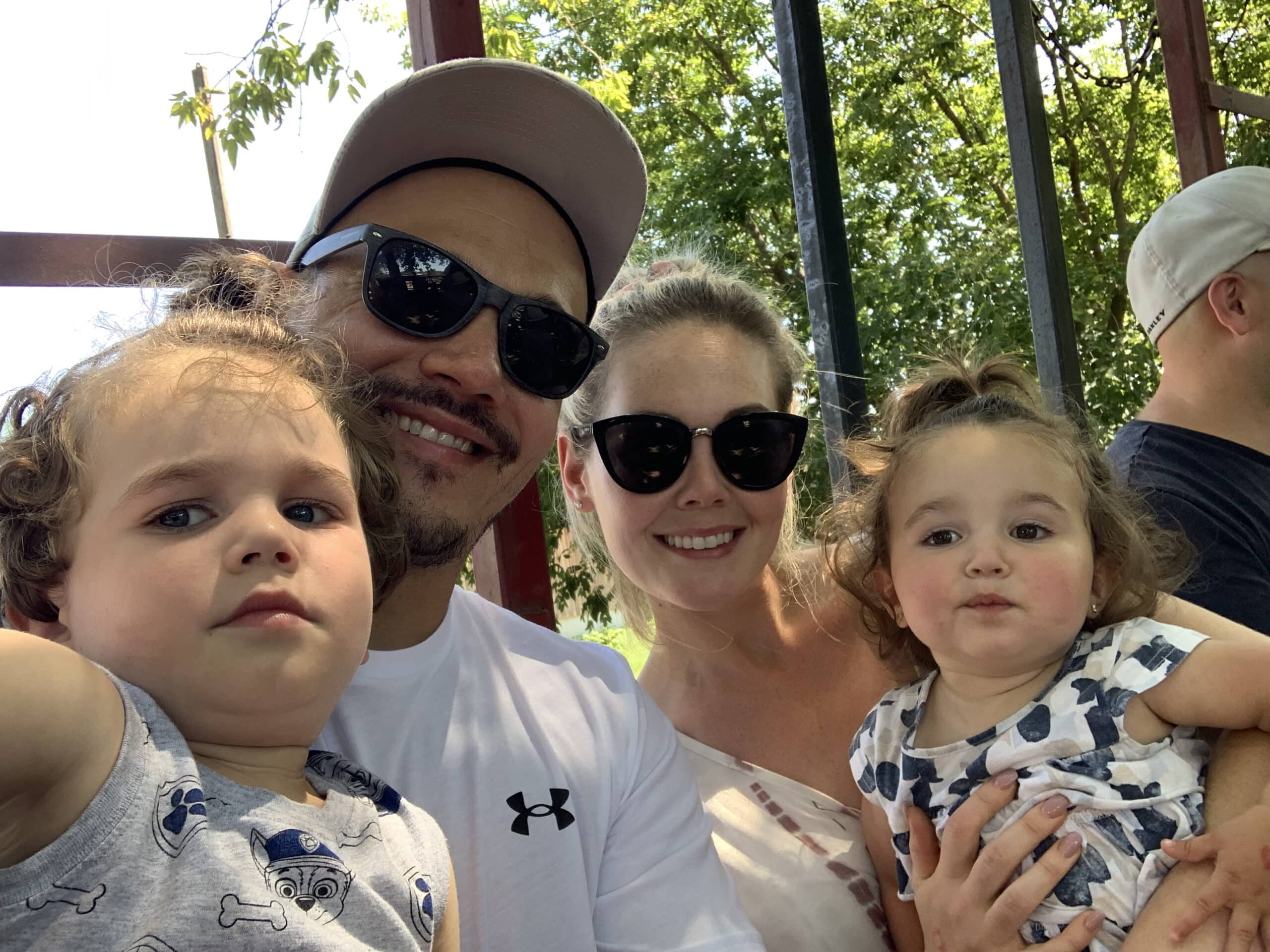
Steph is a passionate mom who co-founded Wumblers to share her parenting journey with others. She graduated from Concordia University with a masters degree in Education Technology and worked as an advisor for many years. Steph loves being a mom and wants to have more kids.
Learn more about Steph and Wumblers here.
















